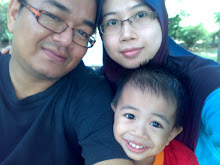We often see quotes by various agricultural sources in NZ, the amount of the likes of phosphorus, sulphur and calcium that are removed from the soil in meat, milk, bone and wool.
This, illustrates the importance of replacing these elements as they go out the farm gate, with the likes of superphosphate, which supplies phosphorus and sulphur.
Tissue studies of plants have found more than 60 different mineral elements, although it has generally been accepted that 16 -17 elements are essential for plant growth.
Many farmers in NZ are well aware of the consequences of low levels of copper or cobalt in pasture, and in some areas selenium, as well as magnesium (grass staggers), even iodine and zinc and in many cases calcium (as in milk fever).
There are many cases where several of the nutrients are missing or are at such low levels that supplementation of the animal is necessary, otherwise the animal would die or be severely undernourished.
Subclinical trace mineral deficiencies occur more frequently than recognized by many livestock producers and can be a bigger problem than acute mineral deficiencies, because the specific symptoms that are characteristic of a trace mineral deficiency are not seen.
Instead, the animal grows or reproduces at a reduced rate, uses feed less efficiently and operates with a depressed immune system. The end result is inefficient production and lower profitability.
When micro-nutrients become a limiting factor, water, fertiliser and other high-energy production inputs are wasted.
In most cases the elements needed by the plant are also needed by the animal which feeds on the plant.
Some elements needed by the animal are not required by the plant, but plants takes them up and makes them available to the animal, and therefore plays a significant role in animal health. Selenium, iodine and cobalt are examples.
Seven trace minerals, have been shown to be needed in supplementing animal diets. They are iron, copper, zinc, manganese, cobalt, iodine and selenium.
Thursday, June 21, 2007
Subscribe to:
Post Comments (Atom)




No comments:
Post a Comment